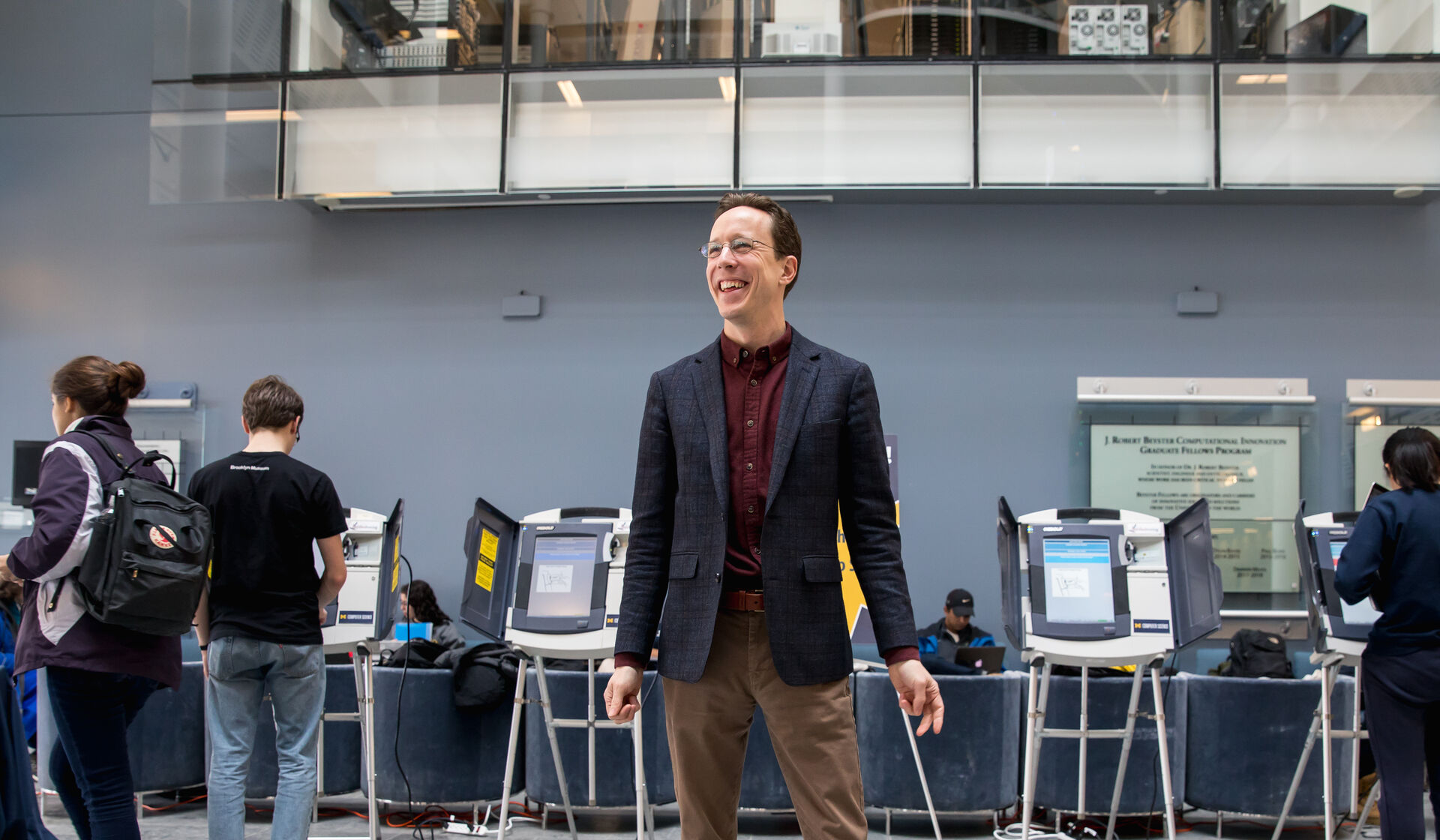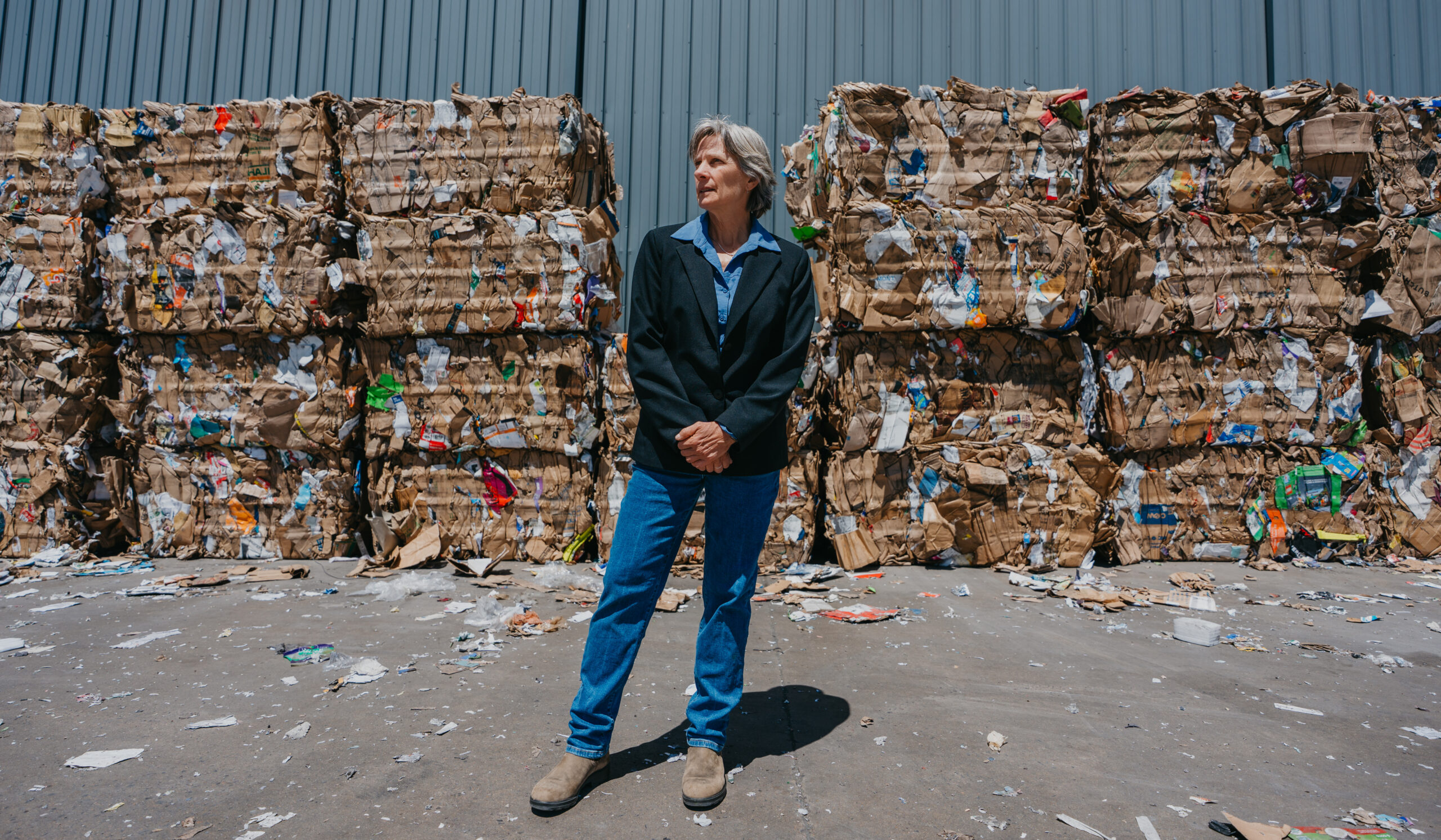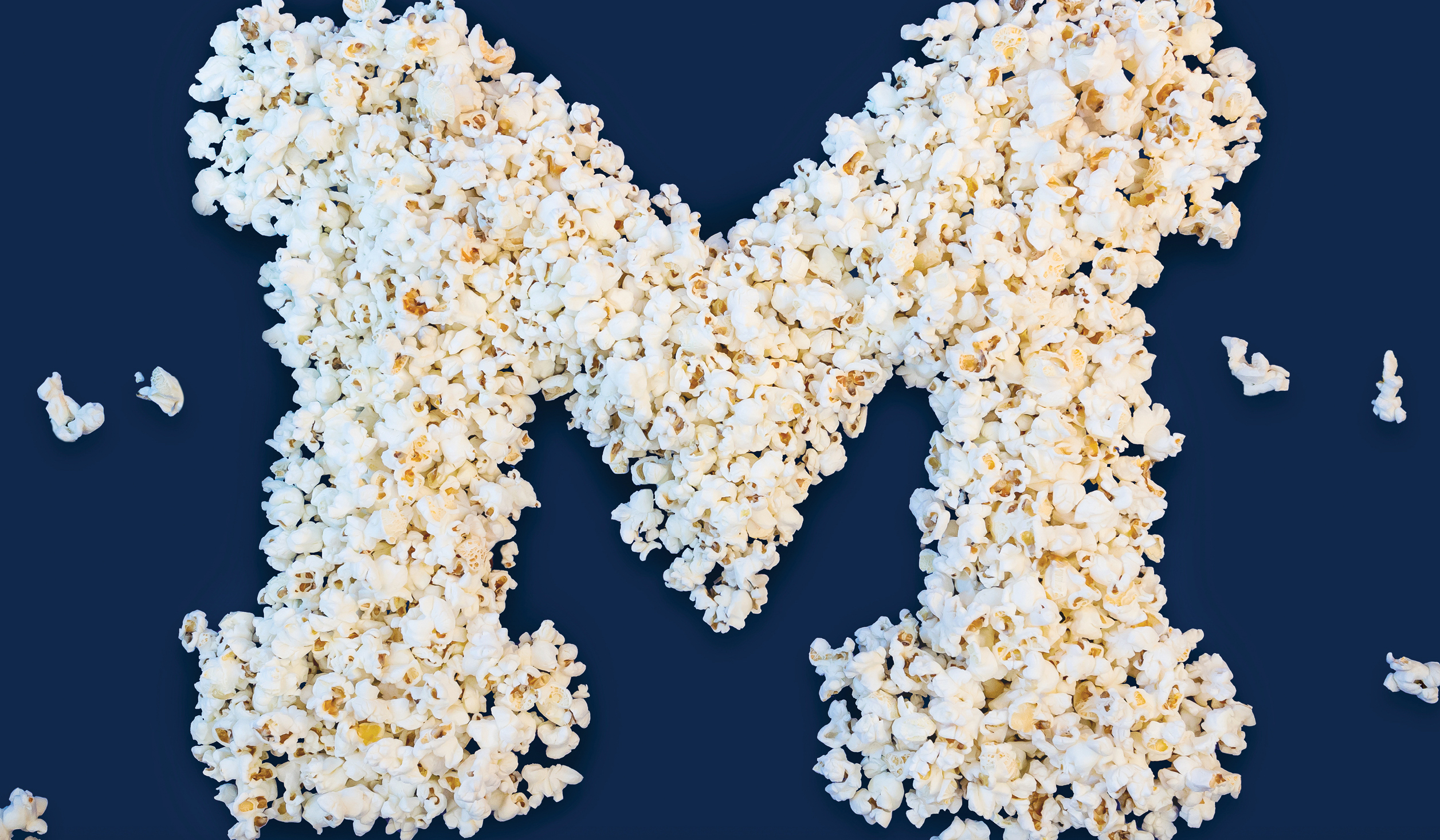Specialists at U-M’s Cooperative Institute for Great Lakes Research are getting out of the lab and onto the lakes, enlisting those whose livelihoods depend on clean water.
Dave Spangler runs a charter sports fishing business on Lake Erie, just east of Toledo, Ohio. For 25 years, he has taken clients out on half- and full-day trips in his 30-foot boat to fish for walleye and yellow perch. He remembers fishing the lake in the ’70s, when it was grim and polluted, and in the ’80s, when the fishing was much better following a major cleanup.
Then came the algae.
Starting in the early 2000s, the lake began to develop huge seasonal swaths of a living sludge known as harmful algal blooms (HABs). It was the first time in decades the bacterial blooms had been a serious problem. Since then, Spangler has become all too acquainted with HABs, which can erupt when rainfall washes excess phosphorus from synthetic fertilizers and urban runoff into the lake. The nutrients spur rampant multiplication of the organisms. Some HABs are so large that boats cannot avoid them.
“It looks like somebody put a green carpet on top of the water,” Spangler explains, adding that the density of the blooms slows down boats and smells like “Grandma’s old basement.”
Nobody wants to fish through a stinking green mat. According to Spangler, who is vice president of the Lake Erie Charter Boat Association, the western basin’s charter fishing industry lost roughly one-quarter of its income to HABs in 2015. While the lake received a respite from HABs in 2016, they returned in full force last year. Had he motored the 45 miles from his marina slip to the Canadian shore, Spangler reckons he would never have escaped the muck.
To make matters worse, the blooms can produce toxins that contaminate the water and harm animals and humans (hence the name). One in particular, microcystin, can cause nausea, vomiting, and liver damage if ingested in high doses. It can kill dogs and livestock who drink the bad water, and it can build up in fish. In 2014, microcystin-contaminated water spread along the Ohio shoreline of western Lake Erie, tainting the municipal drinking water of some 400,000 Toledo-area residents, making national headlines and causing a three-day advisory not to drink the water.
Spangler is accustomed to talking to customers, lawmakers, and the press about HABs. However, last year, a researcher called him.
Devin Gill, ’11, MS’17, a stakeholder-engagement specialist at U-M’s Cooperative Institute for Great Lakes Research (CIGLR), contacted Spangler to request an introduction to the roughly 200 members of the Lake Erie Charter Boat Association.
When she met with association members in March 2017, she told them about CIGLR’s Experimental Lake Erie Harmful Algal Bloom Tracker (nicknamed the HAB Tracker), a website that shows the location and size of blooms plus a five-day outlook of where the blooms might be headed due to currents. Gill then asked how CIGLR could best help the boaters fight the HABs. Wanting her to see the algae for herself, Spangler took Gill out on the lake. The result was several practical modifications to the tracker suggested by Spangler and others who participated in focus groups. That input added extra data to the tracker on wind direction and the blooms’ depths.
“We are the canaries on the lake,” Spangler says. “Most of us spend easily 100 days a year out on the water. CIGLR now knows all they need to do is call and ask, ‘What are you guys seeing?’”
Formerly known as the Cooperative Institute for Limnology and Ecosystems Research, CIGLR’s name changed in May 2017 when U-M was awarded a $20 million, five-year renewable grant to research sustainable management of the Great Lakes. U-M’s School for Environment and Sustainability hosts CIGLR, one of 16 cooperative institutes funded by the National Oceanic and Atmospheric Administration (NOAA).
CIGLR includes a partnership among nine universities across the Great Lakes region as well as multiple nongovernmental organizations and private businesses. Its primary NOAA partner is the Ann Arbor-based Great Lakes Environmental Research Laboratory. Together, they are studying some of the most pressing issues threatening the water (see sidebar), including HABs. During the July-to-October bloom season, they take weekly field samples in western Lake Erie and in Lake Huron’s Saginaw Bay.
The stakes are high for CIGLR and for the lakes themselves. The dangers to drinking water, shipping, fisheries, recreation, and ecosystems means that cooperative, evidence-based solutions have never been more urgent. The Great Lakes hold more than one-fifth of the world’s fresh surface water, and the entire region is an economic powerhouse (see sidebar).
“The Great Lakes have a profound impact on Michigan’s economy, health, and the very way of life for countless Michiganders,” says Lisa Wozniak, ’87, MA’93, MSW’93, the executive director of the nonpartisan Michigan League of Conservation Voters. “Families across the state rely on our lakes to provide safe, clean water.”
A number of problems currently jeopardize the Great Lakes and their watersheds. Yet many of the people most concerned with finding solutions to protect the Great Lakes are working separately in universities, government agencies, and even on boats and are not communicating with each another.
CIGLR wants to change all that. “Simply having facts trickle out of the universities and government agencies doesn’t change things if you can’t communicate it properly and can’t figure out exactly what society’s needs are and address trade-offs,” says CIGLR’s director, Bradley Cardinale.
An ecologist by training, Cardinale grew weary of writing papers read only by those working in his field. At CIGLR, he wants to “work hand in hand with the people who will actually use the information.” His approach is to bring an unusual range of stakeholders to the table, communicating with everyone from individual anglers to nonprofit organizations to make the research as relevant as possible. He hopes, in turn, to set an example for other researchers attacking knotty ecological problems around the world.
“They need to be right there from the inception, helping us design and co-produce that knowledge, because otherwise they are not going to be able to use it effectively,” Cardinale explains. “There is also a big push by the University right now for us to reconnect with society, particularly those people in our backyard.” He cites an October 2017 speech in which U-M President Mark Schlissel emphasized the need for faculty to engage more with the public.
To that end, CIGLR is now employing social scientists who can translate the institute’s findings into action. Enter Gill and her colleagues. An AmeriCorps and Peace Corps veteran, Gill works directly with people like the Lake Erie boat captains, while social scientist Tian Guo studies how individuals’ decisions affect problems like HABs. (Farmers, for example, may decide to use more or less fertilizer in a given year.)
Cardinale is also building strengths through the institute’s consortium of nine regional universities. They share boats, labs, and even funds to hire postdoctoral students and researchers. The arrangement frees up NOAA research dollars, which can then help fund first responders for HABs, oil spills, and other lake and watershed emergencies. Referencing the 2015 Flint water crisis—in which a Virginia Tech water study discovered that 40 percent of the homes had elevated levels of lead—Cardinale says, “CIGLR was not the one to respond. That can never, ever happen again.”
Finally, in an effort to make sure all relevant research reaches the right policymakers in Lansing, Michigan, and Washington, D.C., the institute is working with private-sector partners, like the politically seasoned National Wildlife Federation (NWF). “We want to try and infuse policymakers with the best available science so they can make good, fact-based decisions. Historically, academics have shied away from that,” Cardinale says. “We are not going to anymore.”
For help with the algal bloom crisis in Lake Erie, the NWF’s Great Lakes Regional director, Mike Shriberg, MS’00, PhD’02, is educating CIGLR on the complexities of creating policy. According to Shriberg, the purely scientific solution—taking cropland out of production and planting native grasses—would put farmers out of business, a policy non-starter. Instead, the NWF is asking CIGLR to study other feasible options, such as injecting fertilizer into the soil instead of spraying it on the surface, which would reduce runoff. “We actually ask the modelers to dig deeper,” Shriberg says, incorporating “a political and policy screen as well as a scientific and tactical screen.”
In short, CIGLR is dedicated to the proposition that Great Lakes stakeholders need to cooperate. “There is no university, there is no agency, that can cover all the Great Lakes and all the needs,” Cardinale says. “Unless we team up and start working together to overcome these problems, we’re just not going to be able to solve them.”
CIGLR’s efforts are already paying off in Ohio, where it has been working with Cleveland Water to combat hypoxia, which is low or depleted oxygen in a water body usually caused by dying and decomposing algal blooms. CIGLR has created a hypoxia forecasting system for Lake Erie’s central basin, which provides the drinking water for 1.5 million people in northeast Ohio. Low oxygen conditions lead to drinking water taste and odor problems. If CIGLR could anticipate hypoxia, it could help water facilities counteract those effects before the water reaches faucets.
A team of Cleveland water plant operators and NOAA scientists meet quarterly with Gill and CIGLR researcher Mark Rowe. “We have the real-world data CIGLR needs to calibrate these models,” says Scott Moegling, Cleveland’s water quality manager. Last summer, Rowe alerted Moegling on three occasions that the model was predicting an imminent hypoxic event, giving the utility just enough time to adjust its protocols and protect the city’s drinking water. Others will benefit, too. “These kinds of collaborative research projects are going to benefit the vast majority of small utilities who have no research budgets,” Moegling says.
Wozniak, of the Michigan League of Conservation Voters, warns that beyond Flint, many “Michigan cities, suburbs, and rural communities alike now face a growing array of threats to their drinking water.”
Says Cardinale of CIGLR’s cooperative philosophy, “It shouldn’t be a radical approach, but it actually is, and the Great Lakes are a great place to start breaking down some of those boundaries and barriers between scientists and policymakers.”
As Spangler says, “I know what the lake is and what it’s supposed to be, and I sure don’t want to lose what we’ve got there.”
Zebra mussels, an invasive species along Lake Michigan’s shoreline, threaten the aquatic ecosystem.
Divers look for quagga and zebra mussels, which disrupt fisheries, in Saginaw Bay.
In Lake Erie, CIGLR researchers lower an environmental sample processor, which can quickly analyze algal toxin levels and warn drinking-water managers of potential public health threats.
GREAT LAKES, GREAT THREATS
Warmer air temperatures reduce runoff and increase evaporation from the lake surface, affecting lake levels.
Spills, persistent toxic chemicals, and mining can harm water quality, wildlife, and the overall health of the lake.
There are 27 inland areas of concern or waterways so degraded by toxins and other damage that ordinary beneficial uses like fishing and drinking the water have to be curtailed.
Many wetlands, which are natural filters of groundwater and home to rich ecosystems, have been lost to agriculture, industry, and residential development.
Aquaculture, or the farming of aquatic species like salmon, carries the potential to contaminate lakes and waterways with feces, medications, excess feed, genetic material, or infection.
Water quality is threatened by agricultural runoff; industry runoff; dumping of heavy metals, phosphorus, and other chemicals; and the risk of fossil-fuel spills from underwater pipelines.
Invasive species can successfully reproduce and spread to form a sustained population in a new territory, putting pressure on native ecosystems.
True-color photos document the breadth of the HABs in Lake Erie in August 2017.
CIGLR scientists deploy a GPS-enabled Lagrangian drifter in the western basin of Lake Erie. The device investigates currents and temperature.
A CIGLR technician processes water samples on board a research vessel.
GREAT LAKES, GREAT NUMBERS
The Great Lakes hold more than 84 percent of North America’s surface freshwater and 21 percent of the world’s fresh surface water.
In the U.S. and Canada, 40 million people depend on the lakes for their drinking water.
Some 3,500 species of plants and animals live in the Great Lakes.
More than 1.5 million jobs and $62 billion in wages are tied to the Great Lakes.
The Great Lakes underpin a $7 billion fishery and $16 billion tourism industry.
Over 200 million tons of cargo are shipped annually on the Great Lakes.
Each year, there is $278 billion in bilateral U.S.-Canadian trade in the Great Lakes area.
CIGLR and NOAA researchers and technicians wrangle in buoys that collect information about oxygen levels and other parameters in the lake.
Jenny Blair is a freelance reporter and writer whose work has appeared in a number of publications, including Discover, New Scientist, and The Washington Spectator.





